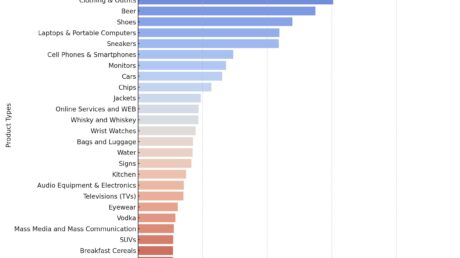B2B technology now plays a central role in business success and buyers are under pressure to make the right decisions about their tech investments. But a new report from LinkedIn reveals that B2B tech brands can do more to differentiate themselves amongst increasingly diverse and sophisticated tech buyers. That means going beyond products, services, and functionality to deliver targeted, personalized, and creative content that helps buyers answer the ‘why?’.
Brand to Buyer, LinkedIn’s eighth tech buying and marketing research, surveyed over 1,500 tech buyers and tech marketers across EMEA. The report highlights the strategic role of tech purchasing today, reflected in increased budgets and headcounts. But, as buyers face constant change, innovation, and demand for rapid impact, getting it right isn’t easy. Tech brands have an opportunity to step up and help customers to solve these challenges, yet on many occasions their marketing is missing the mark.
The Brand to Buyer report reveals five key trends that can help tech vendors to connect more effectively with buyers in a rapidly shifting landscape.
1. Content creativity
Content sits at the heart of B2B tech marketing, helping buyers to research and self-educate before reaching out to sales teams. But, according to the report, vendor content can do more to support, attract, and engage buyers, helping brands stand out from the crowd.
Buyers want vendors to talk to them at a personal level, helping to make the case for the latest technology and show how it will address their specific business challenges. Yet, 73% of tech buyers feel that content doesn’t always demonstrate a good understanding of their organization’s problems.
There is also scope for thinking more creatively, according to the report. While four leading brands are consistently rated highest for creativity, others aren’t going the extra mile to be distinctive. The report proposes three actionable strategies that can help them make an impact.
2. Be brave with branding
Digital is king when it comes to budgets, with 29% of of vendor marketers saying they’ve substantially increased spend on social media over the last 12 months, and 26% saying the same about search engine advertising. But an outsized focus on digital can mean short-term KPIs are prioritized over long-term brand building. And, as budget pressure grows, making the case for the latter will only get harder.
Brand is still a key factor in decision-making, according to buyers, with 63% saying they prefer to work with established brands. Marketers must therefore stand their ground to ensure brand building isn’t forgotten as finances get tighter and the report provides some insights on how they can make the case internally.
3. Employer branding is a marketing priority
Should marketing take charge of employer brand? The report suggests so, as an overwhelming 89% of tech buyers are prioritising values when making tech decisions, including how well a vendor treats its staff.
Often still seen as an HR issue, tech vendors therefore have an opportunity to elevate employer values as part of a unified corporate brand, with content and messaging targeted at prospects, alongside employees and potential employees.
4. Be where your customers are
If your marketing team is considering an ROI calculator or TV ad campaign, then you might want to think again, as buyers report that these are amongst the least useful when making purchasing decisions. Meeting buyers where they spend the most time is a key challenge for marketers, and while it is perhaps unsurprising that social media and SEO are the most popular channels, the report also reveals some surprising results.
5. Influence the external influencers
Where marketing isn’t delivering, influencers – such as external IT consultants, integrators, and channel partners – are filling the gap. In fact, they have become a vital source of information for many clients, 34% of whom say they use them as a source of information, rising at the enterprise level and amongst IT professionals.
From a marketer’s perspective, if you can’t beat them join them, by ensuring that these influencers are well informed and can communicate the value of your products to clients. The report provides further advice on how marketers can best leverage these potential advocates to their advantage.
The LinkedIn ‘Brand to Buyer’ report includes the full survey findings, and details of the five trends that will help B2B tech brands to stand out. Download here.
This piece was originally published by The Drum and was written by Aggie Anthimidou.




